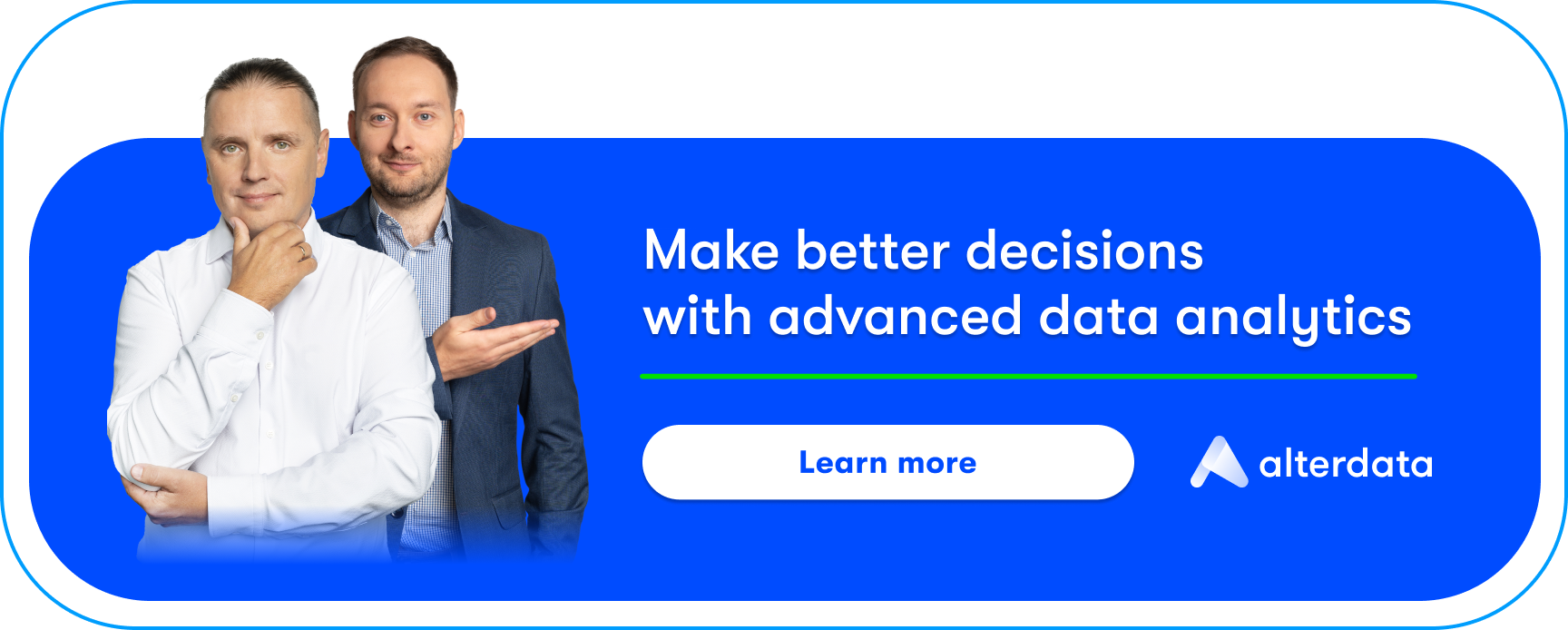Introduction
Modern organizations across various industries face rising operating costs. From the energy sector to education and mobile gaming, effective resource management is crucial to maintaining competitiveness. In this context, predictive analytics becomes an invaluable tool that enables companies to anticipate trends, optimize processes, and respond to risks before they occur. Predictive analytics is based on analyzing large volumes of operational data from diverse sources, allowing the creation of accurate forecasting models and identification of complex patterns. Systematic data collection is essential, as organizations collect data from various sources to build robust predictive models and improve forecast accuracy.
Imagine a manufacturing company that incurs high costs every month due to unplanned machine downtimes. It implements a predictive analytics system that enables forecasting failures based on historical data and real-time sensor readings. Analyzing historical and current data is key to the effectiveness of predictive models. Examining individual data points helps identify patterns that can predict failures. The result? Significant reduction of losses and optimization of maintenance processes. Predictive analytics finds numerous applications across industries such as finance, manufacturing, human resources, and healthcare, highlighting its versatility and business value. Predictive analytics is also widely used in detecting credit card fraud by analyzing transaction data for suspicious patterns. This is the real value that predictive analytics can bring to companies.
In this article, we will explore how predictive analytics can help reduce operating costs, the challenges associated with its implementation, and how organizations can effectively adopt this approach in their business strategy. Before starting the implementation of predictive analytics, it is essential to define the business goal to ensure actions are effective and tailored to the organization’s needs. Predictive analytics often employs classification models to categorize data and support decision-making processes.

What is predictive analytics and how do demand forecasting methods enable forecasting future events?
Predictive analytics is an advanced data analytics approach that uses statistical techniques and machine learning algorithms to predict future outcomes based on historical data. Predictive analytics is applied in many industries such as marketing, supply chain management, human resources, sales forecasting, customer and employee retention, and healthcare.
Predictive analytics leverages both quantitative methods, such as statistical analysis and machine learning, and qualitative methods, such as expert judgment, to improve forecast accuracy.
Unlike traditional analysis methods that focus on interpreting past results, predictive analytics enables forecasting future events based on historical data and current trends. Demand forecasting methods, grounded in economic theory, are used to generate demand forecasts that inform strategic business decisions. This provides guidance on how to optimize processes and avoid potential problems.
Key elements of predictive analytics:
- Data and Preparation – Predictive analytics starts with appropriate data, which forms the foundation of effective forecasts. Data can come from various sources such as ERP/CRM systems, IoT sensors, and behavioral data collected from applications. A critical step is data cleaning, error correction, filling gaps, and resolving discrepancies. Effective integration and analysis require appropriate tools that enable efficient data processing and preparation for subsequent predictive analytics stages.
- Analytical Models and Algorithms – Predictive analytics models enable effective trend forecasting and data-driven decision-making. Linear and logistic regression, decision trees, boosting techniques, and neural networks are used for forecasting and classification, as well as detecting key patterns and dependencies. Time series analysis (ARIMA, Prophet) is useful for forecasting changes over time. Clustering algorithms (K-means, hierarchical clustering) help segment customers appropriately.
- Implementation and Business Application – Even the best predictive model brings no value if not effectively integrated into business processes. Integration with business systems, e.g., via APIs and dashboards, enables automatic real-time decision-making. Specialized software plays a key role in supporting predictive analytics implementation, e.g., in warehouse management, demand forecasting, or logistics process optimization. Predictive models should be regularly monitored and updated based on new data to ensure maximum effectiveness in a dynamic market environment.
The business benefits of predictive analytics include, among others, loss reduction, risk prediction, and resource optimization. Thanks to this, companies can, for example, optimize energy usage, forecast material demand, or reduce returns and complaints.
Technologies supporting predictive analytics and machine learning
Modern predictive analytics would not be possible without advanced technologies that enable forecasting future events and dynamic decision-making based on data. Machine learning plays a key role in this process, allowing the construction of predictive models that analyze vast sets of historical and current operational data. Thanks to this, companies can accurately forecast demand, predict credit risk, and optimize production processes.
In the field of artificial intelligence, neural networks and advanced statistical techniques are particularly important, enabling the identification of complex relationships and patterns in data from various sources. Natural language processing opens new opportunities for text data analysis—for example, customer opinions on social media or service request content—allowing even better understanding of market needs and offer personalization.
Contemporary enterprises have access to increasing amounts of data; however, the quality and proper preparation of this data determine the effectiveness of predictive analytics. Appropriate tools for data integration, cleaning, and processing are essential so that predictive models can generate accurate forecasts and support real-time decision-making. However, legacy systems often hinder effective data integration and create challenges for predictive analytics by limiting compatibility and slowing down data flows.
Automation technologies, such as advanced analytics platforms and cloud solutions, enable dynamic adjustment of business processes to changing market conditions. In manufacturing, predictive analytics supports predictive maintenance by forecasting failures and optimizing maintenance schedules, which translates into reduced operational costs. In marketing, it enables personalization of advertising campaigns, demand forecasting, and analysis of customer behavior on social media, increasing effectiveness and better budget utilization. Adopting modern digital solutions, such as cloud-based platforms, also leads to significant cost savings by improving operational efficiency and reducing long-term expenses.
Implementing predictive analytics solutions requires not only appropriate technologies but also competencies in data analytics and predictive model design. Companies investing in these areas gain a competitive advantage, being able to respond faster to changes, minimize risks, and achieve business goals more effectively. Organizations can cost effectively implement predictive analytics by outsourcing nonessential functions or hiring specialized experts, maximizing efficiency while minimizing expenses. In the future, the role of predictive analytics will only grow, with applications extending to additional areas of management, production, and marketing, enabling companies to optimize processes and increase operational efficiency.

Challenges in implementing predictive analytics for cost reduction
Despite the enormous potential of predictive analytics, its implementation is not without challenges. Key barriers include:
- Data availability and quality – Organizations often struggle with dispersed and inconsistent data that require standardization and integration before use in analytical models. Many companies store information in isolated systems, which complicates consolidation. Connecting these sources requires designing robust IT architecture and implementing ETL (Extract, Transform, Load) processes. Financial statements are a critical source of historical data for predictive analytics, providing essential insights for forecasting and financial analysis. Ensuring high data quality and applying corrective actions when anomalies are detected are critical during integration and analysis. Organizations must also assess and prioritize fraud risk as part of their risk management strategy, using techniques such as transaction monitoring and AI to detect and mitigate potential threats. Learn how Alterdata helps companies improve corporate data quality.
- Implementation costs and lack of internal competencies – Deploying predictive analytics demands investments in technology and team training. Companies often face shortages of data scientists, which can slow implementation. An alternative is collaboration with external firms such as Alterdata.
Supply chain disruptions can pose significant challenges, and predictive analytics can help organizations anticipate and mitigate these disruptions.
Where to apply predictive analytics?
- Demand forecasting and resource management – Effective analysis of historical data allows companies to predict future product demand and plan the availability of products and raw materials necessary for production. Retail chains and online stores can better manage inventory, avoiding both stockouts and excess inventory that generate costs. Demand forecasting is especially important in industries with high demand volatility, where effective product and inventory management translates into optimization of logistics and operational processes.
- Fraud detection – In the financial sector, predictive analytics helps identify suspicious financial transactions and prevent fraud. Banks and insurance companies use machine learning models to analyze customer behavior patterns and detect anomalies immediately, reducing financial losses by eliminating fraudulent behavior. Transaction monitoring and identity verification play a crucial role in real-time fraud detection by analyzing transactions and authenticating users to spot unusual activity. Predictive analytics is also used by financial institutions to detect money laundering and prevent various types of financial crimes. Additionally, predictive analytics is applied in credit risk prediction and credit risk management—enabling assessment of credit repayment probability, identification of potential financial fraud, and minimization of losses related to credit risk. Predictive analytics helps reduce false positives in fraud detection systems, improving operational efficiency and reducing unnecessary investigation costs. Fraud prevention strategies are essential for avoiding financial and reputational damage, and certified fraud examiners—often associated with organizations like the ACFE—play a key role in combating fraud and ensuring compliance. Criminals may commit fraud using stolen personal information (PII), but predictive analytics helps mitigate these risks by identifying suspicious patterns and protecting sensitive data.
- Minimizing downtime and failures – In industry, predictive analytics is crucial in predictive maintenance. For example, manufacturing companies can monitor machine wear and predict failure moments, enabling service planning and elimination of costly downtimes. Moreover, predictive analytics supports employee turnover forecasting and human resource management, allowing better resource planning and minimizing the risk of staff shortages.
- Customer churn prediction – Subscription service providers, such as streaming platforms, SaaS providers, or telecom operators, can use predictive analytics to identify users at high risk of cancellation. Early detection of customers likely to cancel subscriptions allows implementation of personalized retention actions, such as discount offers, service package changes, or improved customer service. Additionally, offer personalization and marketing campaigns based on predictive analytics enable better communication and recommendations matching individual customer preferences, increasing engagement and marketing effectiveness. This helps organizations reduce costs related to acquiring new users and increase their long-term value (Customer Lifetime Value, CLV).
Predictive analytics also supports launching new products by forecasting consumer trends and needs, enabling companies to plan innovations effectively and stay ahead of the competition. Accurate demand and needs forecasting is particularly important in industries with high volatility, where operational efficiency and quick market response determine business success.
How to start?
Implementing predictive analytics in a company may seem complicated, but it does not have to be. So where to start to ensure a smooth and effective process?
- Identifying areas with potential for cost reduction – Organizations should analyze their operational processes and determine where predictive analytics can bring the greatest value. Before implementing predictive analytics, it is crucial to clearly define the business goal to be achieved—precise goal setting allows better strategy alignment and maximizes benefits for business growth. For example, in logistics companies, analyzing delivery patterns can lead to route optimization and fuel cost reduction.
- Collaboration with external partners – Leveraging the experience and technology of analytical solution providers, such as our company, allows more effective implementation of predictive analytics. This accelerates the implementation process, minimizes the risk of costly errors, and provides expert support at every project stage.
- Measuring implementation effects – Establishing key performance indicators (KPIs) enables assessment of predictive analytics implementation effectiveness. Example KPIs include reduction of operational costs, improved resource utilization, downtime reduction, or increased decision-making process efficiency. Evaluating the effectiveness of implemented solutions requires using historical data, which forms the basis for comparing results before and after implementation and analyzing trends and patterns.
Summary
Predictive analytics is a key element of operational cost reduction strategy. Companies investing in advanced analytics gain a competitive advantage and better control over their resources.
If you wonder how predictive analytics can help your company, schedule a free consultation with our expert to learn more examples from our experience in your industry.





























